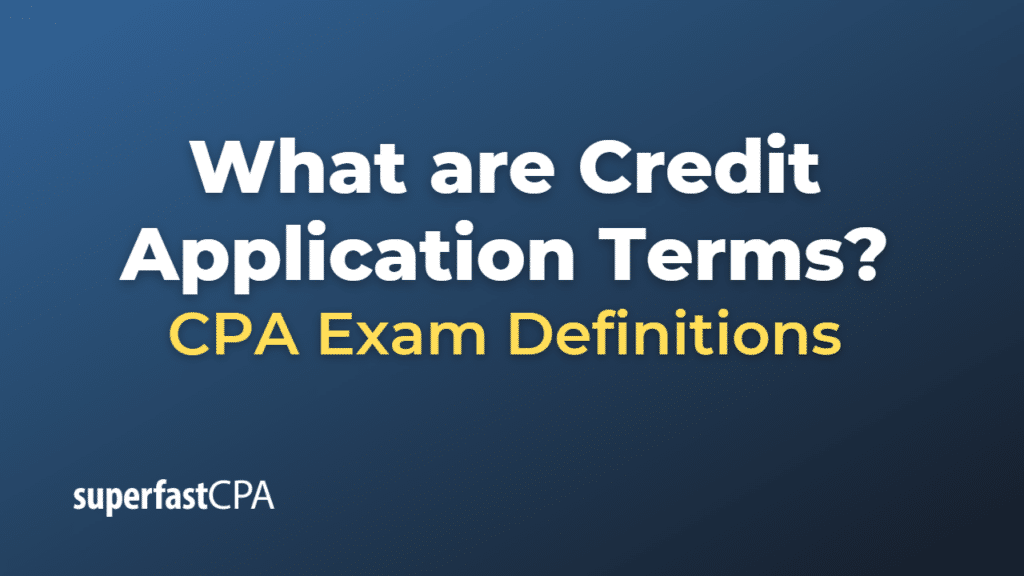Credit Application Terms
Credit application terms refer to the conditions under which a lender agrees to extend credit to a borrower. These terms are usually outlined in a credit agreement or loan contract and can include the following elements:
- Principal Amount: This is the amount of money that the borrower is approved to borrow.
- Interest Rate: This is the percentage of the principal that the borrower will pay as a cost for borrowing the money. It can be either fixed (stays the same for the duration of the loan) or variable (changes based on market conditions).
- Repayment Schedule: This outlines how often and for how long the borrower will make payments. For instance, a car loan might have a repayment schedule of monthly payments for five years.
- Fees: These can include application fees, origination fees, late payment fees, and more.
- Secured vs. Unsecured: A secured loan requires collateral, such as a house or car, which the lender can take if the borrower fails to repay the loan. An unsecured loan does not require collateral.
- Default Conditions: This section outlines what happens if the borrower fails to meet the repayment terms. It can include late fees, a higher interest rate, or, in the case of a secured loan, seizure of the collateral.
- Credit Limit: In the case of a credit card or line of credit, this is the maximum amount that the borrower can borrow.
These terms are usually determined based on the borrower’s creditworthiness, which is evaluated through a process involving a credit application and credit check. It’s important for borrowers to fully understand and agree to these terms before accepting any form of credit.
Example of Credit Application Terms
Let’s say an individual named Maria applies for a personal loan of $10,000 from her bank to consolidate her high-interest credit card debt. After reviewing her credit application and performing a credit check, the bank approves her loan request.
The terms of her loan might look something like this:
- Principal Amount: $10,000 – This is the amount Maria requested and has been approved to borrow.
- Interest Rate: 7% per annum – This is the annual cost Maria will pay for borrowing the money. This rate was determined based on her creditworthiness.
- Repayment Schedule: Monthly payments over 5 years (60 months) – Maria will need to make a payment each month for the next 5 years to fully repay the loan.
- Fees: Origination fee of $200 – This fee is deducted from the loan amount before it’s disbursed to Maria.
- Unsecured Loan: Maria’s loan is unsecured, meaning she didn’t have to put up any collateral to secure it. This is typically the case with personal loans.
- Default Conditions: If Maria misses a payment, she may be charged a late fee of $25, and if she continues to miss payments, her loan could go into default. The default could then be reported to the credit bureaus, negatively affecting her credit score.
These are the terms Maria agrees to when she accepts the loan. It’s important for her to understand these terms and to feel confident she can meet the repayment schedule. If she does, this loan could help her pay off her high-interest credit card debt more effectively.













